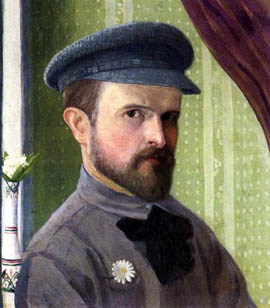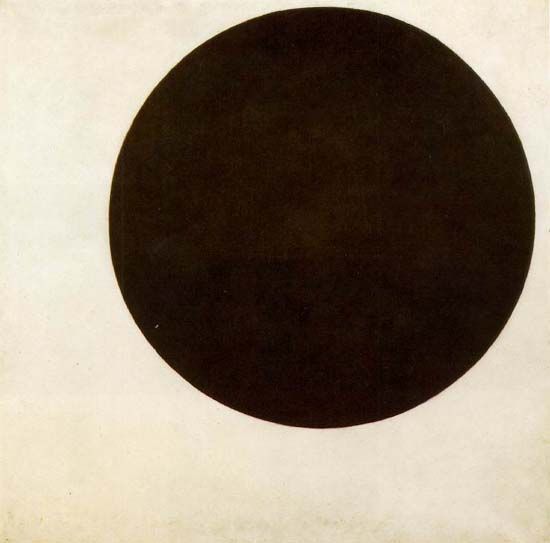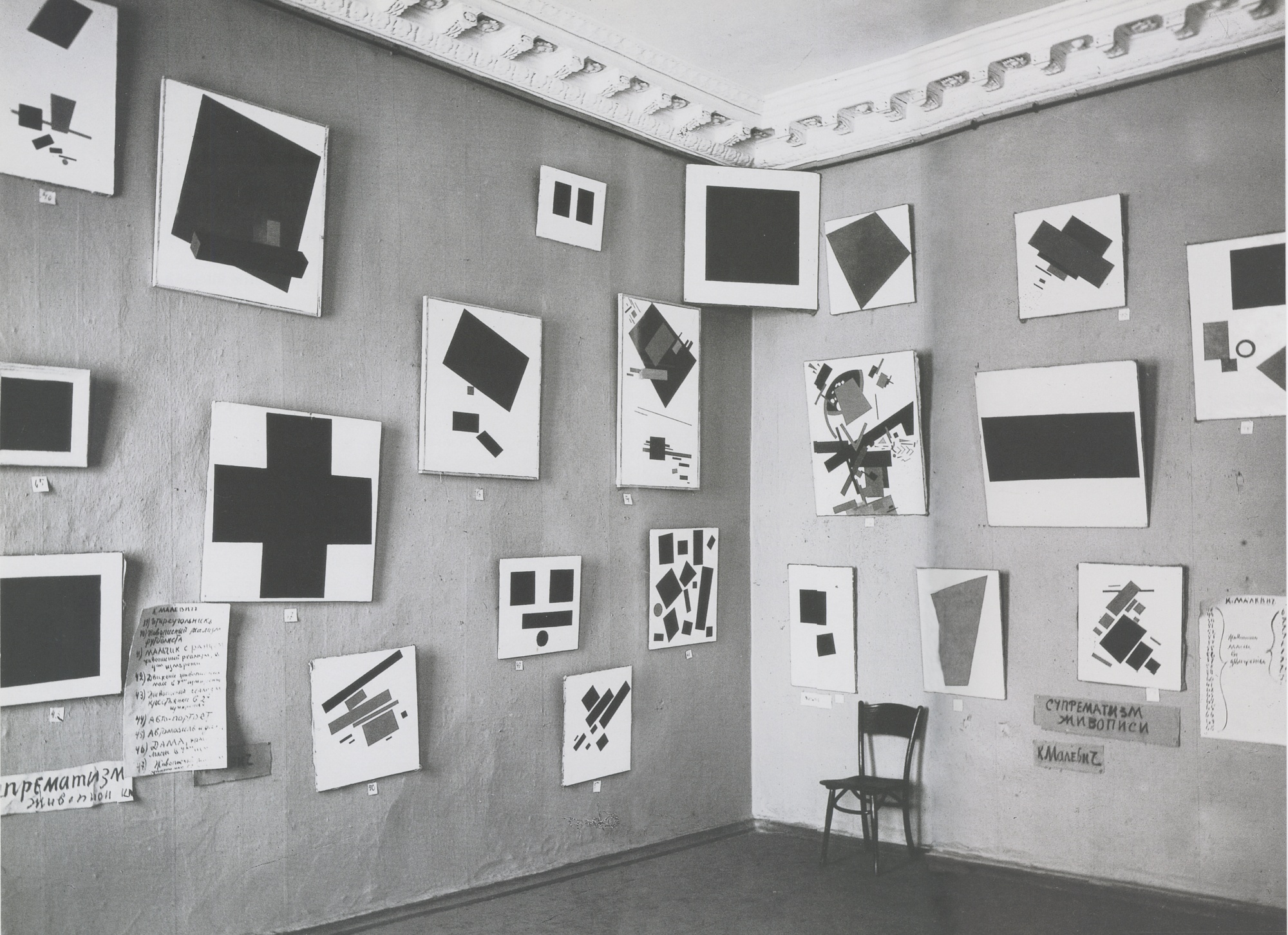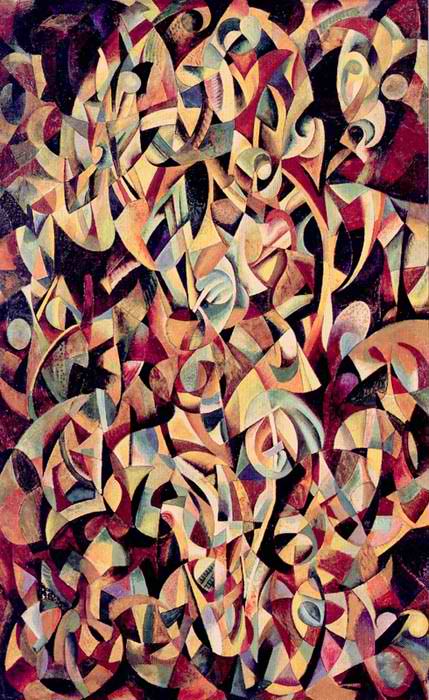|
Suprematist
Suprematism (russian: Супремати́зм) is an early twentieth-century art movement focused on the fundamentals of geometry (circles, squares, rectangles), painted in a limited range of colors. The term ''suprematism'' refers to an abstract art based upon "the supremacy of pure artistic feeling" rather than on visual depiction of objects. Founded by Russian artist Kazimir Malevich in 1913, Supremus (Russian: Супремус) conceived of the artist as liberated from everything that pre-determined the ideal structure of life and art. Projecting that vision onto Cubism, which Malevich admired for its ability to deconstruct art, and in the process change its reference points of art, he led a group of Ukrainian and Russian avant-garde artists — including Aleksandra Ekster, Liubov Popova, Olga Rozanova, Ivan Kliun, Ivan Puni, Nadezhda Udaltsova, Nina Genke-Meller, Ksenia Boguslavskaya and others — in what's been described as the first attempt to independently found a Ukr ... [...More Info...] [...Related Items...] OR: [Wikipedia] [Google] [Baidu] |
Kazimir Malevich
Kazimir Severinovich Malevich ; german: Kasimir Malewitsch; pl, Kazimierz Malewicz; russian: Казими́р Севери́нович Мале́вич ; uk, Казимир Северинович Малевич, translit=Kazymyr Severynovych Malevych ., group=nb (Запись о рождении в метрической книге римско-католического костёла св. Александра в Киеве, 1879 год // ЦГИАК Украины, ф. 1268, оп. 1, д. 26, л. 13об—14. – 15 May 1935) was a ... [...More Info...] [...Related Items...] OR: [Wikipedia] [Google] [Baidu] |
Liubov Popova
Lyubov Sergeyevna Popova (russian: Любо́вь Серге́евна Попо́ва; April 24, 1889 – May 25, 1924) was a Russian-Soviet avant-garde artist, painter and designer. Early life Popova was born in Ivanovskoe, near Moscow, to the wealthy family of Sergei Maximovich Popov, a very successful textile merchant and vigorous patron of the arts, and Lyubov Vasilievna Zubova, who came from a highly cultured family. Lyubov Sergeyevna had two brothers and a sister: Sergei was the eldest, then Lyubov, Pavel and Olga. Pavel became a philosopher and the guardian of his sister's artistic legacy.Dabrowski, M., ''Liubov Popova'', Museum of Modern Art, New York, 1991, p.122. Popova grew up with a strong interest in art, especially Italian Renaissance painting. At eleven years old she began formal art lessons at home; she was first enrolled in Yaltinskaia's Women's Gymnasium, then in Arseneva's Gymnasium in Moscow. By the age of 18 she was studying with Stanislav Zhukovsky, and ... [...More Info...] [...Related Items...] OR: [Wikipedia] [Google] [Baidu] |
White On White
''Suprematist Composition: White on White'' (1918) is an abstract oil-on-canvas painting by Kazimir Malevich. It is one of the more well-known examples of the Russian Suprematism movement, painted the year after the October Revolution. Part of a series of "white on white" works begun by Malevich in 1916, the work depicts a white square, portrayed off-centre and at an angle on a ground which is also a white square of a slightly warmer tone. The work measures . Malevich dispenses with most of the characteristics of representational art, with no sense of colour, depth, or volume, leaving a simple monochrome geometrical shape, not precisely symmetrical, with imprecisely defined boundaries. Although the artwork is stripped of most detail, brush strokes are evident in this painting and the artist tried to make it look as if the tilted square is coming out of the canvas. Malevich intended the painting to evoke a feeling of floating, with the colour white symbolising infinity, and ... [...More Info...] [...Related Items...] OR: [Wikipedia] [Google] [Baidu] |
Ksenia Boguslavskaya
Kseniya (or Ksenia or Xenia) Boguslavskaya (russian: Ксения Богуславская, 24 January 1892 – 3 May 1972) was a Russian avant-garde artist (Futurist, Suprematist), poet and interior decorator. Her husband Ivan Puni was also a painter. She seems to be the originator of the Mavva (symbol of the World Evil) featured in poems written by Velimir Khlebnikov. Career Born in St. Petersburg, she studied art in Paris from 1911 to 1913. She returned to St. Petersburg in 1913 and married Ivan Puni. Their apartment in St Petersburg became a meeting place for avant-garde artists and poets. With Puni she published the cubo-futurist booklet ''Roaring Parnassus'' («Рыкающий Парнас») in 1914. During the year 1915, Boguslavskaya joined the ''Supremus'' («Супремус»), a group of avant-garde artists. Some group members included (Liubov Popova, Nadezhda Udaltsova, Varvara Stepanova, Aleksandra Ekster, Ivan Kliun, Nina Genke-Meller, Ivan Puni and ot ... [...More Info...] [...Related Items...] OR: [Wikipedia] [Google] [Baidu] |
Nina Genke-Meller
Nina Henrichovna Genke or Nina Henrichovna Genke-Meller, or Nina Henrichovna Henke-Meller (russian: Нина Генке-Меллер, Нина Генке; 19 April 1893 – 25 July 1954) was a Ukrainian-Russian avant-garde artist, (Suprematist, Futurist), designer, graphic artist and scenographer. Biography Nina Genke was born in Moscow in 1893 to a Dutch father, Genrikh Genke, and a Russian mother, Nadezhda Tikhanova. She married the artist Vadym Meller (1884-1962). Nina Genke-Meller died in Kyiv in 1954. Education In 1912 she graduated from Levandovskaya Private Gymnasium in Kyiv. She received a title to teach Russian language and history. The following year she began teaching history, geography and drawing at the Higher Primary College for Women in . In Skoptsi, she met the artist Yevgenia Pribylska who headed the Art Studio in a Folk Center and became more inspired to become an artist herself. In 1914 Genke began attending Aleksandra Ekster’s studio in Kyiv for her a ... [...More Info...] [...Related Items...] OR: [Wikipedia] [Google] [Baidu] |
Nadezhda Udaltsova
Nadezhda Andreevna Udaltsova (, 29 December 1885 – 25 January 1961) was a Russian avant-garde artist (Cubist, Suprematist), painter and teacher. Early life and education Nadezhda Udaltsova was born in the village of Orel, Russia, on 29 December 1885. When she was six, her family moved to Moscow, where she graduated from high school and began her artistic career. In September 1905 Udaltsova enrolled in the art school run by Konstantin Yuon and Ivan Dudin, where she studied for two years and met fellow-students Vera Mukhina, Liubov Popova, and Aleksander Vesnin. In the spring of 1908 she traveled to Berlin and Dresden, and upon her return to Russia, she unsuccessfully applied for admission to the Moscow Institute of Painting, Sculpture, and Architecture. She also married Alexander Udaltsov, her first husband, in 1908. In 1910–11, Udaltsova studied at several private studios, among them Vladimir Tatlin's. In 1912–13 she and Popova traveled to Paris to continue their studie ... [...More Info...] [...Related Items...] OR: [Wikipedia] [Google] [Baidu] |
Ivan Puni
Ivan Albertovich Puni (russian: Иван Альбертович Пуни; also known as Jean Pougny; 20 February 1892 – 28 December 1956) was a Russian avant-garde artist (Suprematist, Cubo-Futurist). Biography Early life Ivan Puni was born in Kuokkala (then Grand Duchy of Finland in the Russian Empire, now Repino in Russia) to a family of Italian origins. He was the grandson of an eminent Italian composer of ballet music, Cesare Pugni. His father, a cellist, insisted that he follow a military career, but Ivan instead decided to take private drawing lessons with Ilya Repin. By 1909, he had his own studio. Career Puni continued his formal training in Paris in 1910–11 at the Académie Julien and other schools, where he painted in a derivative ''fauviste'' style. Upon his return to Russia in 1912, he married fellow artist Kseniya Boguslavskaya, and met, and exhibited with, members of the St Petersburg avant-garde, including Kazimir Malevich and Vladimir Tatlin. He made a secon ... [...More Info...] [...Related Items...] OR: [Wikipedia] [Google] [Baidu] |
Lyubov Popova
Lyubov Sergeyevna Popova (russian: Любо́вь Серге́евна Попо́ва; April 24, 1889 – May 25, 1924) was a Russian-Soviet avant-garde artist, Painting, painter and designer. Early life Popova was born in Ivanovskoye District, Ivanovskoe, near Moscow, to the wealthy family of Sergei Maximovich Popov, a very successful textile merchant and vigorous patron of the arts, and Lyubov Vasilievna Zubova, who came from a highly cultured family. Lyubov Sergeyevna had two brothers and a sister: Sergei was the eldest, then Lyubov, Pavel and Olga. Pavel became a philosopher and the guardian of his sister's artistic legacy.Dabrowski, M., ''Liubov Popova'', Museum of Modern Art, New York, 1991, p.122. Popova grew up with a strong interest in art, especially Italian Renaissance painting. At eleven years old she began formal art lessons at home; she was first enrolled in Yaltinskaia's Women's Gymnasium, then in Arseneva's Gymnasium in Moscow. By the age of 18 she was studying ... [...More Info...] [...Related Items...] OR: [Wikipedia] [Google] [Baidu] |
Ivan Kliun
Ivan Vasilievich Kliun, or Klyun, born Klyunkov (Russian: Иван Васильевич Клюн; 1 September 1873, Bolshiye Gorky, Petushinsky District - 13 December 1943, Moscow) was a Russian Avant-Garde painter, sculptor and art theorist, associated with the Suprematist movement. Biography His father was a carpenter. In 1881, seeking to improve their economic condition, the family moved to Kyiv. In 1890, they moved again, to Russian Poland. He received his initial artistic education at the in Warsaw, in the 1890s, while working as an accountant. In 1898, he relocated to Moscow, where he frequented the studios of and Ilya Mashkov. His most important contact, however, came in 1907 when he met Kazimir Malevich and was introduced to the Russian Avant-Garde. This influenced him profoundly, although he joined the when it was created in 1910 and remained a member until 1916. He originally worked in the Symboloist style but, in 1913, due to the influence of Malevich, he began e ... [...More Info...] [...Related Items...] OR: [Wikipedia] [Google] [Baidu] |
Black Circle
''Black Circle'' (or ''motive 1915'') is a 1924 oil on canvas painting by the Kiev-born Russian artist Kazimir Malevich, founder of the Russian Suprematism movement. From the mid-1910s, Malevich abandoned any trace of figurature or representation from his paintings in favour of pure abstraction. The work depicts a monumental perfect black circle floating on a flat white background. It is, along with his ''Black Square'' of 1915, one of his most well known early works in this field, depicting pure geometrical figures in primary colours.Farthing, 617 The motif of a black circle was displayed in December 1915 at the '0.10' Exhibition in St. Petersburg along with 34 other of his abstract works. The exhibition coincided with the publication of his manifesto "From Cubism to Suprematism" and launched the radical Suprematism movement. Malevich described the painting, along with the similar ''Black Square'' and ''Black Cross'' (both 1915), in spiritual terms; "new icons" for the aestheti ... [...More Info...] [...Related Items...] OR: [Wikipedia] [Google] [Baidu] |
0,10 Exhibition
The Last Futurist Exhibition of Paintings 0,10 (pronounced "zero-ten") was an exhibition presented by the Dobychina Art Bureau at Marsovo Pole, Petrograd, from 19 December 1915 to 17 January 1916. The exhibition was important in inaugurating a form of non-objective art called Suprematism, introducing a daring visual vernacular composed of geometric forms of varying colour, and in signifying the end of Russia's previous leading art movement, Cubo-Futurism, hence the exhibition's full name. The sort of geometric abstraction relating to Suprematism was distinct in the apparent kinetic motion and angular shapes of its elements. Origin of the name The mysterious number 0,10 refers to a figure of thought: Zero, either because it was expected that after the destruction of the old world, the year zero could begin again, or because the artists exhibiting wanted to find the core of painting, and ten, because ten artists were originally scheduled to participate. In fact, there were four ... [...More Info...] [...Related Items...] OR: [Wikipedia] [Google] [Baidu] |
Alexander Rodchenko
Aleksander Mikhailovich Rodchenko (russian: link=no, Алекса́ндр Миха́йлович Ро́дченко; – 3 December 1956) was a Russian and Soviet artist, sculptor, photographer, and graphic designer. He was one of the founders of Constructivism (art), constructivism and Russian design; he was married to the artist Varvara Stepanova. Rodchenko was one of the most versatile constructivist and Productivism (art), productivist artists to emerge after the Russian Revolution of 1917, Russian Revolution. He worked as a painter and graphic designer before turning to photomontage and photography. His photography was socially engaged, formally innovative, and opposed to a painterly aesthetic. Concerned with the need for analytical-documentary photo series, he often shot his subjects from odd angles—usually high above or down below—to shock the viewer and to postpone recognition. He wrote: "One has to take several different shots of a subject, from different points of ... [...More Info...] [...Related Items...] OR: [Wikipedia] [Google] [Baidu] |


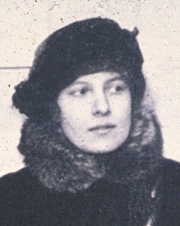
_1.jpg)
.jpg)

